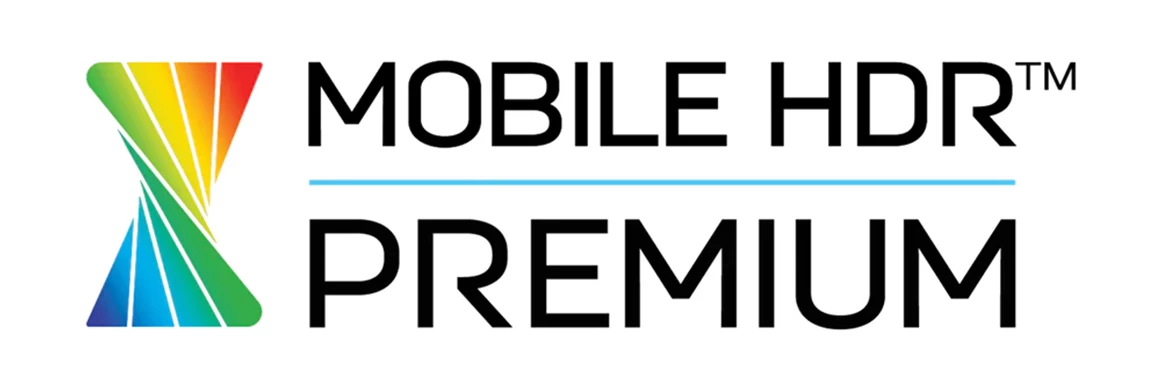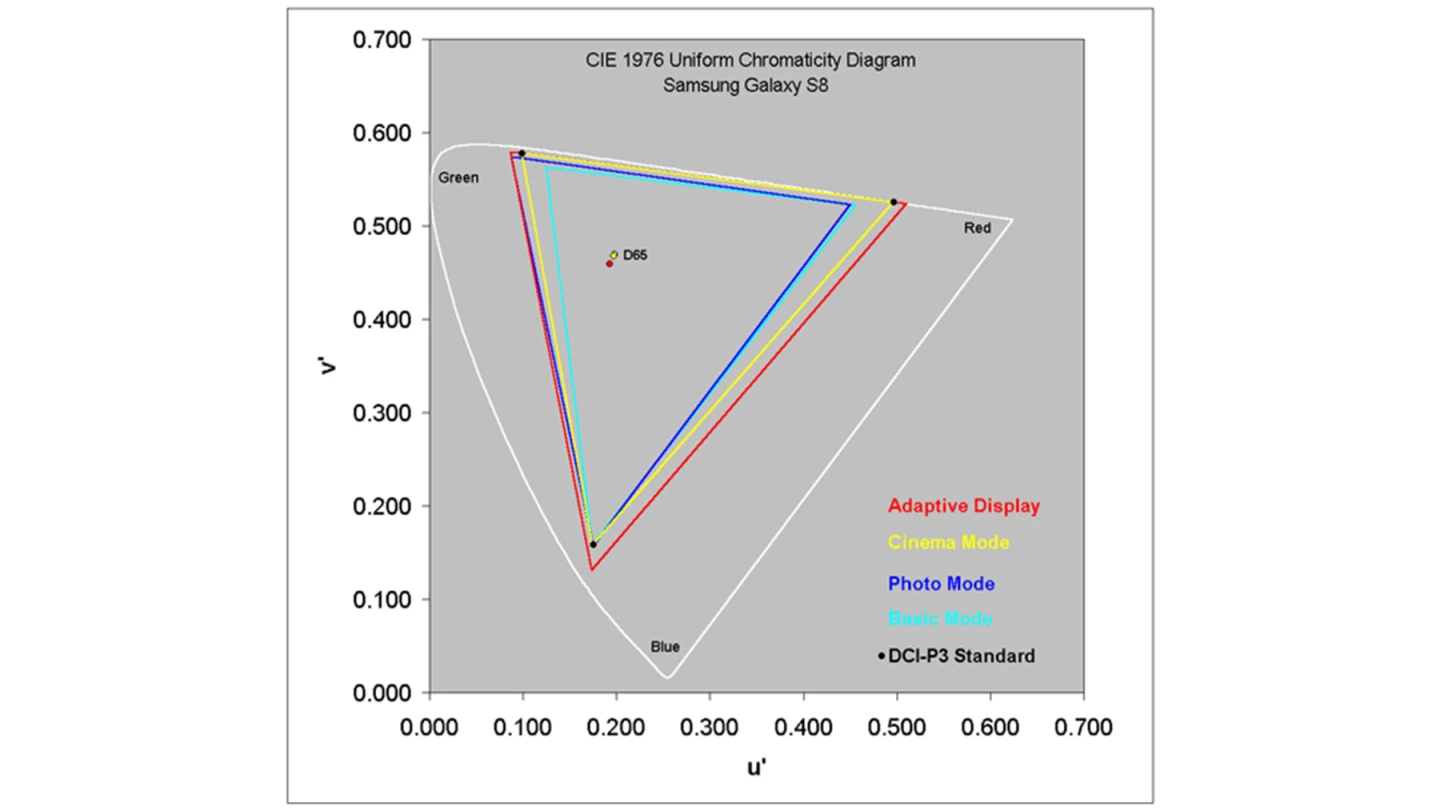Dr. Raymond Soneira of DisplayMate Technologies, one of the world's leading independent display analysts, has published the results of extensive lab testing on the Samsung Galaxy S8's display – and awarded the device DisplayMate's highest ever A+ grade.
Of course, the display is impressive on paper. With 2,960 x 1,440 resolution and a taller and narrower 18.5 : 9 aspect ratio, the 5.8-inch display covers nearly the entire front side of the phone and curves around its edges. But DisplayMate measures and evaluates well beyond what can be found on a spec sheet: The company also identified and quantified Samsung's improvements in color gamut, color accuracy, dynamic range, brightness and performance in ambient light.
Notable highlights include a new record – at over 1,000 nits, it has the highest peak brightness ever recorded on a smartphone. Its improved dual ambient light sensors and overall larger color gamut help keep the display performing optimally even at different lighting levels. The S8's AMOLED display also has significantly above average performance in terms of viewing angles: When viewed at a 30-degree angle, it loses only 29-percent of its brightness. A typical LCD display loses about 55-percent of its brightness at the same angle.

The S8 series display is the first to be certified with the Mobile HDR Premium designation, which means it meets certain standards for resolution, dynamic range and color space. In practice, it's roughly the mobile equivalent of the "UHD Premium" standard for 4K TVs, and can play HDR content.
For non-HDR content, the Samsung video processor has a new Expanded Dynamic Range feature that produces an HDR-like effect on standard video content. How much does it improve the average viewing experience?
Dr. Soneira explains, "The answer depends on whether you like images to be processed for increasing the image brightness, color, and contrast. Some people like more vivid images. Even if you don't always want vivid images, the Expanded Dynamic Range improves the visible picture quality in ambient light, which washes out image colors and contrast. It's also good for improving the picture quality of dark or muddy photos. However, there is no objective way to evaluate the Expanded Dynamic Range."
DisplayMate also provided some insight on the S8's four user-selectable color modes: Cinema Screen, Photo Screen, Basic Screen and Adaptive Display. These options vary the display's color space and depth for various purposes.

DisplayMate found that the Cinema Screen mode (for watching HDR content) duplicates the movie industry's standard DCI-P3 color gamut almost perfectly, and that its color accuracy is likely to be better than that of a 4K Ultra HD TV. It also found that the S8's Photo Screen mode produces the colors of the Standard Adobe RGB (sRGB) color gamut with 98-percent accuracy – perfect for viewing high-end digital photography that adheres to this standard. In the Basic Screen mode, suitable for most types of web and app content, DisplayMate measured better color accuracy than most HDTVs or laptop/computer monitors.
The Adaptive Display mode produces more vivid, saturated colors, which is often a user preference. DisplayMate recommends it for viewing in medium-to-high levels of ambient light, which washes out image colors with the glare of reflected light.
The report also identifies a few other display perks: a user-adjustable white point, so you can see a warmer or cooler display according to your preference, as well as a customizable blue light filter for night viewing. There's also a super-dimming mode should you find reason for an ultra-stealthy display.
While the DisplayMate report takes an in-depth look at the performance of the S8 display and includes a wealth of empirical, subjective data, it also is summarized with a resounding seal of approval: "It is the most innovative and high performance smartphone display that we have ever lab tested," Dr. Soneira writes.
For more consumer-oriented impressions, check out our hands-on look at the Samsung Galaxy S8 and S8+.
Source: DisplayMate





